#birch broom
Text
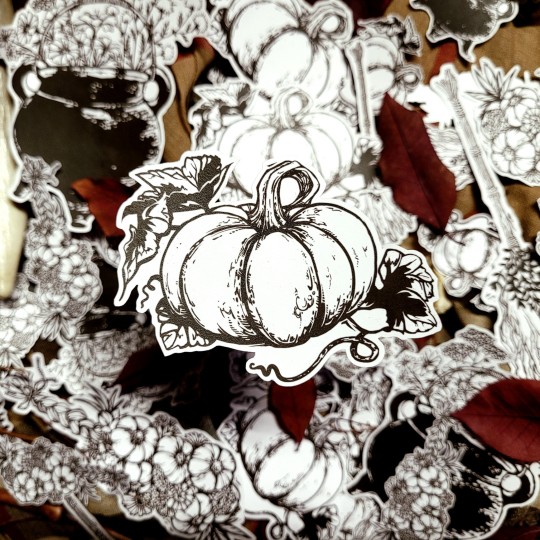


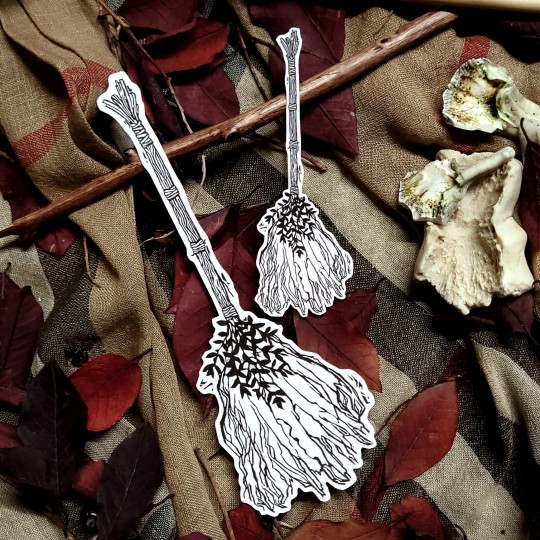

Autumnal Linocut themed stickers are available in the shop! Theyre vinyl i print, cut n seal by hand and theyre very cute especially the tiny pumpkins if you stack em all together in a lil punkpin patch.
#autumn vibes#fall aesthetic#fall art#fall stickers#autumn stickers#pumpkins#garlic braid#witches broom#twig broom#birch broom#cinnamon broom#cauldron#dried flowers#witchy aesthetic#cottagecore witch#greenwitch#kitchen witch
22 notes
·
View notes
Text
Mysteries of Death Contemplation Spell (1) Baba Yaga
Baba Yaga is the Russian spirit who rules the conjunction of magic and harsh reality, of limits and possibilities. This Death Spirit provides fertility when she chooses, but she also consumes those who disappoint her. Baba Yaga, iron-toothed and boney-legged, wears a necklace of human skulls; her home is surrounded by a fence crafted from human bones. She offers comprehension, not comfort.
Like her compatriot spirits, Kali and La Santisima Muerte, Baba Yaga encompasses all the mysteries of life and death; contemplate her in order to comprehend these mysteries. This spell doesn’t suggest contacting her (the Baba has little patience; don’t waste her time without good reason), but this kind of magical contemplation instead.
Build an altar featuring birch wood and leaves, animal imagery, a mortar, pestle and broom, and especially, food and drink. Baba Yaga is always voraciously hungry. Offer her real food or cut out photo images for the altar: she’s especially fond of Russian extravagances like coulibiac. Offer her a samovar with blocks of fine Russian caravan tea and perhaps a water pipe.
Sit with the altar, gaze at it from different angles, play with the objects and see what comes to mind.
(from The Element Encyclopedia of 5,000 Spells by Judika Illes)
#spells#death spells#baba yaga#birch#animal images#Mortar and Pestle#drink#tea#samovar#pipe#food#brooms
21 notes
·
View notes
Text
Witches’ Broom
A dense bundle of twigs on a #birch #tree caught my eye and I discovered what it was and how it was formed. #Witchesbroom #trees
A winter woodland walk, an opportunity to admire the deciduous trees’ skeletal frames with their filigree of twigs against the lowering sky, to hear the creaking of the boughs in the wind. Something about a Silver Birch (Betula pendula) catches the eye, five dense, ball-like masses of stunted twigs hanging from its branches. The mind runs riot. Creations of an industrious mammal or home to an…

View On WordPress
#cytokinin#Hexenbesen#Le Champion des Dames#Martin Le Franc#origin of nightmare#phytohormone#Silver birch#Taphrina betulina#Witches’ broom
0 notes
Text
👑 MEDIEVAL MODS + CC | The Sims 4

I am currently playing Morbid's ULTIMATE Decades Challenge over on YouTube. Below is a list of all of the Mods + CC I am using in my game to create the ultimate MEDIEVAL experience 👑
I'll be updating this list as I add new mods and cc to my game.
📺 Watch on YouTube
👑 MODS:
Medieval Windenburg
MC Command Center
MC Woohoo
More Traits in CAS
Royalty Mod
Medieval Interactions
Ye Olde Cookbook + Stoves
Home Region by Kuttoe
Fashion Authority 2 by Lot51
Functional Broom
Functional Loom
Functional Pottery Wheel
Archery Skill
Blacksmithing Skill
Honey Production Mod + Mead Brewer
Children/Toddlers Can Die of Anything
Playable Harp + Lute
Functional Horses & Carriages, No Helmet
Create Campfire Bonfire Anywhere
Arranged Marriages
Custom Farm Animals
Purchase Custom Animals
Zero's Historical Mods (pickpocket, disease, etc.)
Phone to Notebook Replacement
Sippy Cup + Toys Default Replacements
Stuff for Pets
Harvestable Wheat Grain
Natural Knitting Stuff
Live in Business (LittleMsSam)
More Buyable Venues (LittleMsSam)
Force to Leave (LittleMsSam)
👑 CC:
Build:
TSR Ye Medieval - Ligna Windows Set
TSR Ye Medieval - Timber Frame Walls
TSR Ye Medieval - Framework Walls
TSR - Broken Wood Door
TSR Ye Medieval - Soil Terrain
TSR Ye Medieval - Hay Ground Terrain
Birch Tree (2048x2048)
Objects:
Lili's Palace - Folklore Set No. 1
Linzlu's Frontier Items
TSR Ye Medieval - Peasant Homelife 1
TSR Ye Medieval - Peasant Homelife 2
TSR Ye Medieval - Peasant Homelife 3
TSR Ye Medieval - Peasant Homelife 4
TRS Ye Medieval - Tristan Bathroom
TSR Ye Medieval - Tavern Part 1
TSR Ye Medieval - Candle Holder
TSR - Skara Stool
TSR - The Old Garden Boat
TSR - The Old Garden Quay
Fish Market Decor
Fish Rack
Fish Crate V1
Fish Crate V2
Bohrium Vegetables I
Old Rustic Well ("Eco Living" version)
Stable Set by Moriel
Rustic Animal Shed
Rustic Chicken Coop
Rustic Bee Box
Bassinet + Infant Crib
CAS:
TheSimsResource (Ye Medieval)
TheSimsResource (Sifix)
Simverses (most of my peasant CC)
Anora's Hair (Princess Leia's Kenobi Hair by Buzzard)
Rosceline's Hair (Lusine by simstrouble)
Kenric's Hair (Henry Hair by JohnnySims)
Mira's Hair (Padme's Mustafar Hair by Buzzard)
Papa Cedrick's Hair (Wearwolves Game Pack)
Roseline's Peasant Dress
👑 LOTS:
Caspian's Seaside Hut (Lot + CC List) (20x20)
Caspian's Lakeside Cottage (Lot + CC List) (20x20)
TSR Ye Medieval Avelyn Castle (64x64)
TSR Ye Medieval Galbury Tavern (30x20)
TSR Ye Medieval Tyrada Tavern (30x20)
TSR Ye Medieval Herbalist Hut (40x30)
👑 SAVE FILE:
Srsly's Blank Save
Map Replacement Medieval Windenburg
663 notes
·
View notes
Note
biased as always, the number one Anne Stan, ofc i gotta christen this returned account with my girl <3
hlc react to mc developing a crush on anne? from the consistent visits to feldcroft to the occasional outing that mc can take her on, it’s obvious they’re growing to be a little more than friends…
A/N: Anne Sallow simping content coming right up lol
HLC REACT TO MC CRUSHING ON ANNE SALLOW
It all started the day Sebastian introduced MC to her. Even with her tired eyes, they were enraptured by her sweet voice and good nature despite being in such pain. Even if Anne was convinced there was no real help for her, MC was determined to make life just a bit more enjoyable.
At first, It was letters with little gifts. Those turned into visits without Sebastian tailing them. Eventually, sneaking Anne out of the house for some "fresh air." Even without Sebastian around, her uncle was rather unpleasant. Always hovering, to the point of being overbearing.
Their most memorable date outing by far has to have been when MC offered to fly her up the hill on their broom to overlook Feldcroft. She sat sidesaddle on the handle in front of MC and she held on to them as they gently glided up into the air. MC struggled to focus on where they were going having her so close.
So close in fact, that if MC hadn't been so distracted, maybe they would have heard the faint but distinctive whisper of ancient magic coming from the scar on her side.
SEBASTIAN SALLOW: He gets suspicious when MC starts asking too many Anne centric questions. Then he gets REAL suspicious when he walked in on MC and Anne playing wizard's chess. He hadn't announced that he was going, so he was shocked to see MC with his sister alone.
Protective Brother™ mode activated. What were they playing at? His sister had enough to deal with right now, she didn't need MC drooling all over her. He doesn't fall for any of MC's excuses, no one visits Anne more than he does, not even her old school friends. There was no way MC's intentions were "just being friendly".
He keeps an eagle eye out for MC. If he can't find them anywhere, he goes straight to Feldcroft to break up the fraternizing. Anne will have to tell him off multiple times.
OMINIS GAUNT: He doesn't know this is going on until Anne casually mentions it in her letters. This....he struggles with this. Anne is very special to him. They'd been close since first year, she was one of his first and few friends and now she...she seems so...taken by MC.
He wrestles with his own pride and self loathing. He should have said something sooner. He should have told her how much he....it didn't matter now. MC was braver. She doesn't deserve a coward like him anyway. He's happy she's happy. That's all that matters...right?
IMELDA REYES: She knew Anne. They were on the Slytherin quidditch team together before Anne fell ill. She reads about Anne and MC in letters and snorts. She advises Anne to not be so quick to admire MC, they aren't that amazing.
NATSAI ONAI: She finds it absolutely adorable. MC always thinks of Anne, constantly asking her if Anne will like what they've found or bought. Even asks for advice, not that she knows much about relationships, but she tries her best.
GARRETH WEASLEY: He gets nosey, seeing MC almost always nose deep in a letter that smells floral with a touch of birch. He'll poke fun that they're infatuated with their special pen pal and not so subtly imply that he has the perfect potion in mind if they want to speed things along. *Wink*
LEANDER PREWETT: Anne who? Sebastian's sister? Pfffft, good luck with that. Sebastian is a bulldog when it comes to family. Very protective, almost possessive.
AMIT THAKKAR: He first realizes that MC is acting strange when they started daydreaming heavily in class. Even in the more interesting classes. What's got them all starry-eyed and distracted from learning? ....he should have known. A girl.
EVERETT CLOPTON: He hears about it second hand from someone else who heard MC and Sebastian going at it over MC seeing Anne without supervision. Rumors spread like wildfire, especially when the arguably most interesting person at Hogwarts apparently developed a crush on Sallow's sister and was sneaking around with her. Made for very juicy gossip.
POPPY SWEETING: She hears about it through the rumor mill as well and tells MC to fly in on a hippogriff next time. That always impresses the ladies, trust her on this.
ANNE SALLOW: MC brought some color back into her life. They wanted to know all about her, they showered her with gifts, and would come to see her even without reason. She caught on fast that MC fancied her and she had fun playing coy.
Oh, MC wants to know what she likes for her birthday? What an odd, totally random question. MC has been staring at her for the last five minutes, not realizing she's stopped talking, how interesting. She loved pointing out MC's blatantly odd behavior and watching them fluster within an inch of their life. It's the Slytherin in her, she thinks it's funny.
When MC starts asking for more private outings, that's when she really starts to feel special. MC was willing to accommodate her in any way she needed. If she grew exhausted from a walk, they would carry her back. If she was having a particularly rough day with the curse, they'd tend to her hand and a foot, almost fussing as much as Sebastian. Almost.
The time MC flew her up the hill to the lookout, she felt herself falling, in the figurative sense. MC may have fallen for her first, but she fell harder. Holding on to them as they flew, she couldn't take her eyes off their face. She almost kissed them. She didn't, however, miss the fact that her scar hurt a lot less that day.
#hogwarts legacy#hogwarts legacy reactions#hl#sebastian sallow#ominis gaunt#anne sallow#imelda reyes#natsai onai#garreth weasley#leander prewett#amit thakkar#everett clopton
55 notes
·
View notes
Text
Modern farmers and landowners, however, are prejudiced against scrub because it is considered unproductive. As a result it has been almost entirely eradicated from Britain. Scrubland is almost ubiquitously described as wasteland. It was not always so. In medieval times, scrub species were highly valued, and scrub was anything but a dirty name. The iron-rod stems of blackthorn were used for walking sticks and its fruit – sloes – for medicines and flavouring wine and gin. Brambles, like elder, produce edible berries that were also useful for dyes. Hawthorn makes good walking sticks, as well as tool handles, and was used for stock-proofing, and produces hawberries for preserves and sauces. Hazel was for hurdles, thatching spars, basketry, furniture and charcoal; willow for charcoal-making and basketry, cricket bats and medicine. Charcoal from alder and dogwood made gunpowder. Broom, of course, made excellent brooms. Juniper was for smoking meats and making pencils, its berries for distilling oil, and flavouring game and gin. Spindle was for skewers, toothpicks and baskets. Wych elm made bows, furniture and threshing floors. Birch provided cotton reels and bobbins, firewood, brooms and roofing thatch; its bark was for waterproofing and tanning. Birch wine, fermented from sap, was used as medicine and young birch leaves were a diuretic. From the dog rose came rosehips – which we now know are exceptionally high in vitamin C – for syrups, sauces and jellies. Gorse – known as ‘furze’ in Sussex – was fodder for animals and fuel for kilns and ovens. A buffer of thorny scrub was often encouraged around woodland to prevent the ingress of grazing animals. Place names like Thorndon, Thornden, Thornbury, Haslemere, Hazeldon, Spindleton, Hathern (hawthorn), Hatherdene, Brambleton, Barnham Broom, Broomhill, Broompark, pepper the map of Britain. Our own field names at Knepp recall the days when scrub was an asset – Benton’s Gorse, Broomers Corner, Broom Field, High Reeds, Cooper Reeds, Faggot Stack Plat, Bramble Field, Rushett’s, Rushall Field, Little Thornhill, Great Thornhill, Stub Mead, Barcover Furzefield, Swallows Furzefield, Coates’ Furzefield, Greenstreet Furzefield, Constable’s Furze, Pollardshill Furze, Old Furze Field, Furzefield Plat, Great Furzefield and lots of Little Furzefields.
Isabella Tree, Wilding: The Return of Nature to a British Farm
89 notes
·
View notes
Text
Moth of the Week
Peppered Moth
Biston betularia

The peppered moth is a part of the family geometridae. It was first described in 1758 by Charles Linnaeus. This moth gains its name from its speckled coloration, which has been studied as an example of natural selection and population evolution.
Description This species has a short body with narrow forewings. The body and wings are the same white base peppered with black dots and irregular black lines. This speckled pattern may vary with some moths having very few spots and others having so many that they look as if they are black with white spots as opposed to white with black. In rare cases, the black on the wings and body is replaced with gray or brown and in even rarer cases the spots are a combination of brown and black/gray. These spots help the moth camouflage against lichen on trees.
The evolution of this moth had been studied extensively during the last two hundred years, which created the term “industrial melanism.” During the Industrial Revolution, air pollution killed off lichen and covered trees in soot. This caused moths with a black spots on white base (typica) coloration to lose their camouflage and die off due to predators. This caused a spike in population for moths with a darker coloration (carbonaria) because they had the camouflage advantage. Once environmental conditions improved, the lighter colored moths once again became the dominant coloration.
The male’s antennae are bipectinate, meaning it has two rows of rami going down either side of a singular flagellum.
Wingspan Range: 45 - 62 mm (≈1.77 - 2.44 in)
Diet and Habitat The caterpillar of this moth eats many trees, shrubs, and small plants such as Blackthorn (Prunus spinosa), Hawthorn (Crataegus monogyna), Downy (Betula pubescens) and Silver Birch (Betula pendula), limes, sallows, poplars, oaks, Sweet Chestnut (Castanae sativa), Beech (Fagus sylvatica), Bramble (Rubus fruiticosus), Broom (Cytisus scoparius), Black Currant (Ribes nigrum) and Hop (Humulus lupulus).
They have a wide range, being found in China (Heilongjiang, Jilin, Inner Mongolia, Beijing, Hebei, Shanxi, Shandong, Henan, Shaanxi, Ningxia, Gansu, Qinghai, Xinjiang, Fujian, Sichuan, Yunnan, Tibet), Russia, Mongolia, Japan, North Korea, South Korea, Nepal, Kazakhstan, Kyrgyzstan, Turkmenistan, Georgia, Azerbaijan, Armenia, Europe and North America. They prefer habitats of woodland, scrub, hedgerows, parks and gardens.
Mating Depending on its location, this moth can have one or two generations per year. In Great Britain and Ireland, the peppered moth has one generation per year, whilst in south-eastern North America it has two generations per year. They emerge from the pupea in late May to August.
The females attract males with pheromones, which are carried by the wind. Males follow the concentration gradient to find the female. The male guards the female from other males until she lays the eggs. The female lays about 2,000 pale-green ovoid eggs about 1 mm in length into crevices in bark with her ovipositor.
Predators This species is a night-flying moth, making the vulnerable to bats. The males in particular fly every night to search for a female while females fly only the first night.
To protect themselves from birds during the day, this species rests on lichen covered trees to camouflage themselves.
The day time resting positions of this moth have been recorded and studied. This study shows that the peppered moth prefers resting spots that are covered such as below where the trunk and a branch meet, the underside of branches, and leafy twigs.
Additionally, the study found peppered moths with a lighter coloration (typica) blend in better against crustose lichens rather than foliose lichens because birds can see ultraviolet light. The peppered moth reflects UV light while crustose lichens don’t, making them easier to pick out.
Fun Fact The caterpillars of the peppered moth resemble things in both color and size. An experiment published in 2019 done on the caterpillars of the peppered moth showed that the larva (even when blindfolded) could sense the color of the tree they live on and change their body color to match and/or would move to a different twig that was closest in color to their own body.
(Source: Wikipedia, Butterfly Conservation, Max Planck Institute)
#Biston betularia#libraryofmoths#animals#bugs#facts#insects#moth#lepidoptera#mothoftheweek#Geometridae#peppered moth
86 notes
·
View notes
Text
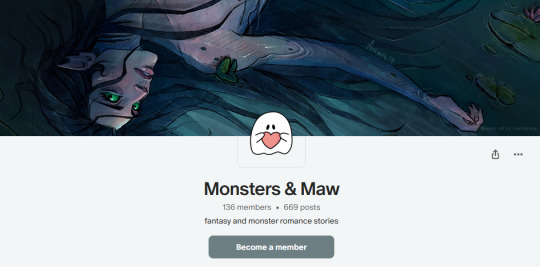
Monsters & Maw Patreon returns 21st October, with a Dullahan story in time for Halloween!

Extract:
A mist on Samhain night coiled its curious fingers through the hawthorn hedgerows and carded the bone-pale grasses along the verge with gentle, sighing caresses. At the fulcrum of the year, when the last warmth of summer had truly faded, and the biting maw of winter had yet to show its teeth, you came truly alive for a precious few weeks.
You sighed around a smile, softly sweeping the birch bristles of the broom back and forth across the flagstone that marked the entrance to your cottage, and hoped to sweep away the bad luck that seemed to have gathered like choking dust in all the corners of your life that year. You were ready for the restorative stillness that winter would bring, but you weren’t quite ready to let go of the bounty of a rich autumn either.
That afternoon, you’d set your carved Jack o’ Lantern grinning on the step, and you’d given your private remembrances to the recently departed. You’d walked sunwise round your house with a bough of smouldering fir to cleanse the space with smoke, and you’d offered firewood from your stores to the village boys who’d trekked all the way out to your lonely cottage to make sure that your hearth was included in the communal bonfire. In the morning, you would go down to the smouldering embers on the village green and light your own torch to bind your hearth to the rest of the community, but for the moment, you were alone on the edge of things.
Now, as the tiny crescent of moon sailed out from behind the bare, silhouetted branches of the old copse of ash and oak behind the drystone wall, you leaned a moment on the wooden gate at the end of the garden path, and tilted your face to its frail, faltering light.
Your breath made ghosts dance in the air, and as you rested there and smelled the last of the mint in the garden beside you, the sound of hoofbeats on the road disturbed the dark and the quiet of the night.
It was far too late for any of the villagers to be venturing up the road now. Travellers were rare on Samhain night, and yet a horse was approaching at a steady, measured walk, and eventually, the hazy outline of a rider on a huge, ragged mount melted from the mist.
Your heart leapt to your throat and you stepped back, trying not to trip or stumble or bolt to your house for fear of insulting the rider. This was no human being sitting astride that monstrous horse with its rolling red eyes.
For one, the rider had no head.
“Dullahan,” you breathed before you could stop yourself, and you felt their attention sharpen onto you. You bit back a hissing curse at your stupidity just in time and stood your ground. There was an iron horseshoe above your door, and you wondered if that would be enough to protect you from this Unseelie Fae.
The horse’s hooves slowed and it tossed its head, snorting and blowing steam in the cold night, and the rider turned to regard you with a head that wasn’t there.
---
You will be able to read the whole story on the 'Little Ghosties' tier of Patreon from 21st October 2023!
I hope to see you there for more like this, and if you want to know a little more about it, here's the post I made to let folks know about my Patreon coming back!
77 notes
·
View notes
Text
Enough postponing, here's my attempt at making something comprehensive on one of the most varied creatures in Lithuanian folklore: laumės (Art credits: Marcė Katiliūtė)
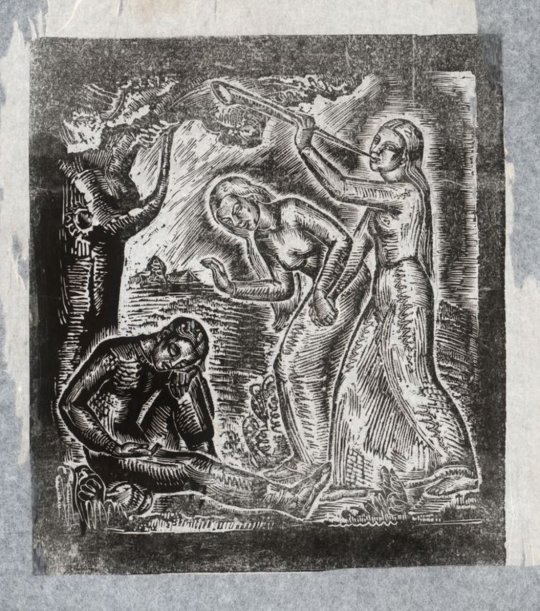
Basically, laumės are groups of humanoid women, connected with water, birch, night and the act of weaving. Primarily considered bridges between humans and gods, they inhabit forests while having the ability to summon rain and weave rainbows.They interact with people by bathing in saunas after everyone is gone. Appeased laumės are said to leave textiles as a reward for a clean, warm sauna or any offerings made to them. Their day is Thursday, just like Perkūnas' and they're most active during the night.
Now onto complicated stuff: there are many variations when it comes to laumės’ appearance. Age ranges from young to old, some are said to have metal nails, some have chicken feet and feathered bodies hiding under white clothes which let them interact with humans. The earliest depiction of laumės was in the form of a dove, the bird of Goddess Laumė, sometimes as goat-headed or horned women, bears, cats. They’re either depicted as incredibly alluring and sexual or grotesque and terrifying. Their views towards humans also change: they can be only dangerous to men, sometimes they’re most dangerous to babies, which they exchange for bundles of wheat in the crib, the bundles growing into laumiukai (similar to fae changelings) overnight. It is unclear what they do to the stolen babies. In some tales they're shown as very ruthless, uncaring of their safety, in others they're maternal, stealing out of desire for motherhood and accidentally killing the babies out of love. Sometimes they can be helpful to weavers, however this is achieved only after guessing a riddle or obeying a specific rule, on Thursdays. Even then, should a laumė run out of material, she'll weave in hair or intestines of the woman whose work she's finishing.
Overall, laumės can be called morally grey: they're wonderful seamstresses who gift their handiwork to humans, but at the same time deadly, being able to thinly slice and weave an entire person as if they were wool.
SPECULATION: Their origin is quite interesting. I think that there may be a tie between them and the matriachal goddess Laumė (shown below), who, after having a child with a human man, was "banished" to Earth by the new patriarchal gods but this is JUST my opinion that is not based off of any source and moreso speculative connections between Laumė and laumės
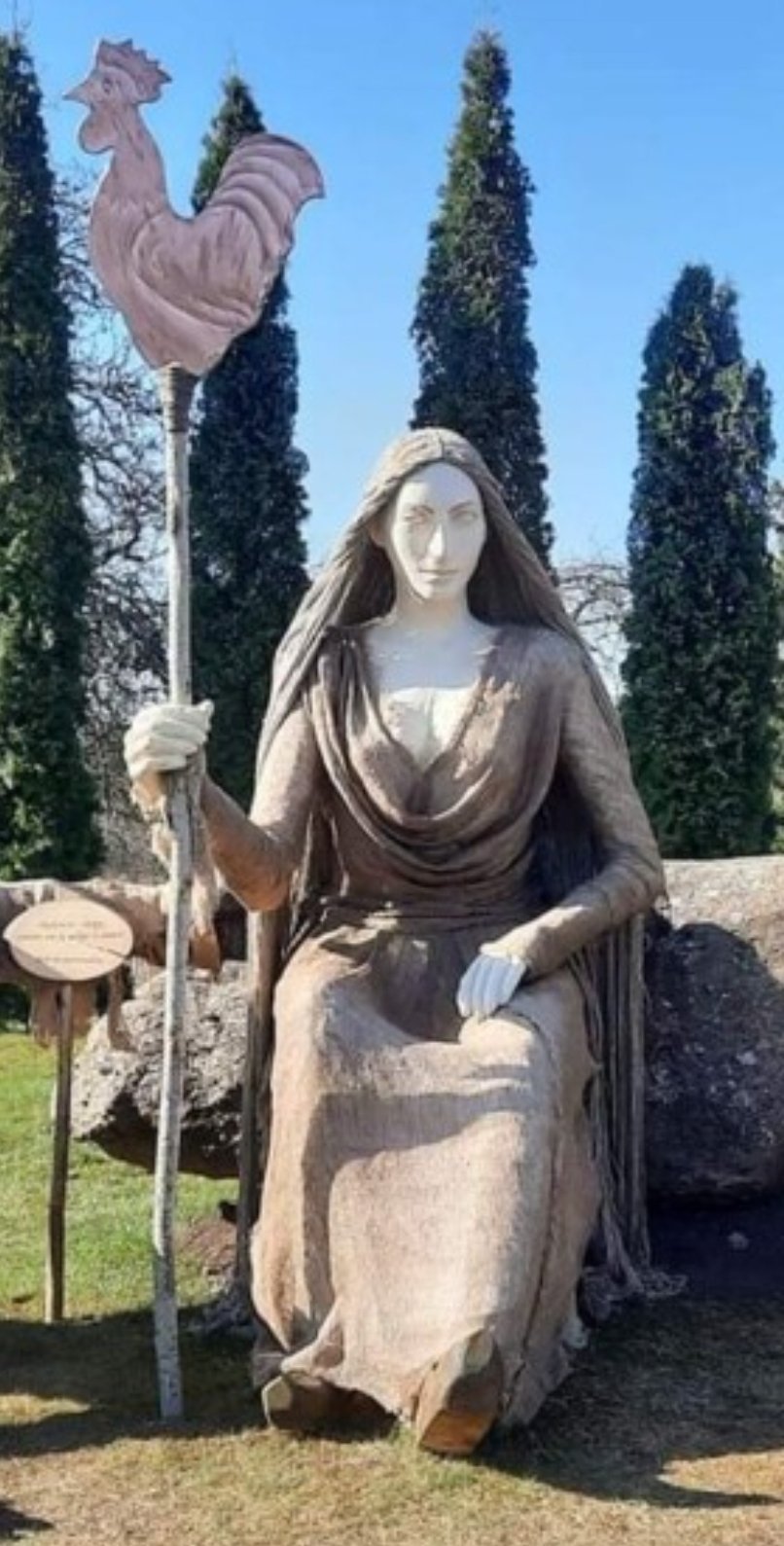
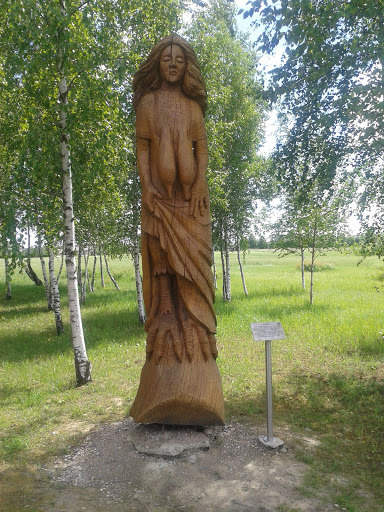
Laumės are associated with mistletoe and similar parasitic plants seen on birch trees, from which they like to swing. Some sources claim that the so-called “laumė broom” can banish laumiukai from a home when they're beaten with it. Their ties with bodies of water, by which they dance and summon rain and new moon are also apparent, as well as their specific fear of flax. Though beings with many variations, they are the most famous characters in Lithuanian folklore along with aitvarai.
#viltės threads#folklore#eastern europe#lithuania#lithuanian folklore#lithuanian mythology#mythology
61 notes
·
View notes
Text
English Folk/Traditional Names for Common Plants & Herbs

These are known now as folk names, but back in the medieval era and well into the 18th century, these were the common names for some of the herbs and plants in use in witchcraft (and generally!) today.
This list is not an exhaustive one; the names given here are just some of the names that were used primarily in England for common plants within the region.These plants have other unique and wonderful names in many other cultures and languages throughout the world.
✧ ADDER’S TONGUE (Ophioglossum Vulgatum)
A.K.A.: English Adder’s Tongue, Snake’s Tongue, Viper’s Tongue, Serpent’s Tongue, Adder’s Spear, Christ’s Spear.
✧ AGRIMONY (Agrimonia Eupatoria)
A.K.A.: Harvest Lice, Cat’s Tail, Liverwort, Sticklewort, Stickwort, Stickweed, Fairy’s Wand, Church Steeples, Aaron’s Rod, Beggar’s Lice/Ticks.
✧ ALDER (Alnus Glutinosa)
A.K.A.: Black Alder, Fever Bush, Owler.
✧ ANGELICA (Angelica Archangelica)
A.K.A.: Holy Ghost/Root of the Holy Ghost, St. Michael’s flower, Angel’s Food.
✧ ANISE (Pimpinella Anisum)
A.K.A.: Sweet Alice, Aniseed.
✧ APPLE (Malus)
A.K.A.: Fruit of the Gods, Fruit of the Underworld, Silver Branch, Silver Bough.
✧ ASH (Fraxinus Excelsior)
A.K.A.: Bird’s Tongue, Hampshire Weed, Widow-maker, Venus of the Woods, Husbandman’s tree.
✧ BALSAM (Commiphora Opolbalsamum)
A.K.A.: Balsam of Gilead, Balm Tree, Mecca Myrrh.
✧ BASIL (Oscimum Basilicum)
A.K.A.: Our Herb, St. Joseph’s Wort, Witches’ Herb, King of Herbs, Holy Basil.
✧ BAY (Laurus Nobilis)
A.K.A.: Bay Laurel, True Laurel, Daphne, Noble Laurel.
✧ BERGAMOT (Monarda Didyma)
A.K.A.: Horsebalm, Bee Balm, Scarlet Mondara.
✧ BIRCH (Betula Pendula)
A.K.A.: Silver Birch, White Birch, Lady of the Woods.
✧ BITTERSWEET (Solanum Dulcamara)
A.K.A.: Woody Nightshade, Felon-wort, Felonwood, Blue Nightshade, Fever Twig, Staff Vine, Violet Bloom.
✧ BLACKBERRY (Rubus Fruticosus)
A.K.A.: Bramble, Fingerberry, Blackhide, Blackbutter, Thimbleberrym Brambleberry, Gouthead.
✧ BLUEBELL (Hyacinthoides Non Scrupta)
A.K.A.: Nodding Squill, Auld Man’s Bell, Ring-o-bells, Wood Bells.
✧ BROOM (Cytisus Scoparius)
A.K.A.: Besom, Irish Tops, Scotch Broom, Butcher’s Broom, Sweet Broom.
✧ BURDOCK (Arctium Lappa)
A.K.A.: Thorny Burr, Beggar’s Buttons, Sticky Bobs, Love Leaves, Hare Burr.
✧ CARNATION (Dianthus Caryophyllus)
A.K.A.: Gilliflower, July Flower, Clove Pink, Sops-in-wine.
✧ CHAMOMILE (Anthemis Nobilis)
A.K.A.: Whig Plant, Chamomel, Earth/Ground Apple,
✧ CHESTNUT [SWEET] (Castanea Sativa)
A.K.A.: Marion, Jupiter’s Nut.
✧ CHICKWEED (Stellaria Media)
A.K.A.: Starweed, Adder’s Mouth, Scarweed/wort, Tongue Grass, Stitchwort, White Bird’s Eye, Little Star Lady.
✧ CHICORY (Cichorium Intybus)
A.K.A.: Witloof, Blue Sailors, Coffeeweed.
✧ CLARY [WILD] (Salvia Verbenaca)
A.K.A.: Christ’s Eye, Wild Clear-eye, Vervain Sage, Eyeseed.
✧ CLEAVERS (Galium Aparine)
A.K.A.: Catchweed, Beggar Lice, Goose Grass, Sticky Willy, Bedstraw, Robin-run-the-hedge, Goose’s Hair, Hedge-burrs, Milk Sweet, Stick-a-back, Scratchweed, Barweed.
✧ COMFREY (Symphytum Officinale)
A.K.A.: Knitbone, Slippery Root, Blackwort, Bruisewort, Ass Ear.
✧ DAISY (Bellis Perennis)
A.K.A.: Day’s Eye, Poet’s Darling, Bachelor’s Buttons, Bairnwort, Billy Buttons, Boneflower, Margaret’s Herb.
✧ DANDELION (Taraxacum Officinale)
A.K.A.: Swine’s Snout, Blowball, Puffball, Clockflower, Tell-the-time, Priest’s Crown, Lion’s Tooth.
✧ DEADLY NIGHTSHADE (Atropa Belladonna)
A.K.A.: Belladonna, Banewort, Black-cherry, Devil’s Cherries, Naughty Man’s Cherries, Devil’s Herb.
✧ FEVERFEW (Tanacetum Parthenium)
A.K.A.: Featherfew, Featherfoil, Midsummer Daisy, Nosebleed.
✧ FOXGLOVE (Digitalis Purpurea)
A.K.A.: Fairy Gloves/Fingers/Petticoats/Thimbles/Weed, Witches’ Glove, Witches’ Bells, Our Lady’s Glove, Dead Men’s Bells.
✧ GARLIC (Allium Sativum)
A.K.A.: Poor Man’s Treacle, Stinkweed, Camphor of the Gods.
✧ GOLDENROD (Solidago Vibgaurea)
A.K.A.: Aaron’s Rod, Cast the Spear.
✧ HAWTHORN (Crataegus Monogyna)
A.K.A.: May Blossom, Mayflower, Whitethorn, Hagthorn, Ladies’ Meat.
✧ HELLEBORE [BLACK] (Helleborus Niger)
A.K.A.: Bear’s Foot, Setter-wort/grass.
✧ HEMLOCK (Conium Maculatum)
A.K.A.: Poison Hemlock, Devil’s Porridge.
✧ HENBANE (Hysoscyamus Niger)
A.K.A.: Hog Bean, Stinking Nightshade, Henbell, Devil’s Eye, Witches’ Herb, Devil’s Tobacco.
✧ HOLLY (Ibex Auifolium)
A.K.A.: Bat’s Wings, Holy Tree, Christ’s Thorn.
✧ HONEYSUCKLE (Lonicera Periclymenum)
A.K.A.: Woodbind, Fairy Trumpets, Sweet Suckle, Honeybind.
✧ HOREHOUND [BLACK] (Ballota Nigra)
A.K.A.: Madwort, Black Hoarhound, Black Archangel.
✧ HOREHOUND [WHITE] (Marrubium Vulgare)
A.K.A.: Bull’s Blood, White Archangel, Eye of the Star, Houndbane, Devil’s Eye.
✧ IVY (Hedera Helix)
A.K.A.: Gort, Bindwood, Lovestone.
✧ JUNIPER (Juniperus Communis)
A.K.A.: Bastard Killer, Gin Berry.
✧ LADY’S MANTLE (Alchemilla Vulgaris)
A.K.A.: Our Lady’s Mantle, Lion’s Foot, Bear’s Foot, Nine Hooks.
✧ LAVENDER (Lavendula Angustifolia)
A.K.A.: Elf Leaf, Spikenard, True Lavender.
✧ LEMON BALM (Melissa Officinalis)
A.K.A.: Sweet Melissa, Bee Balm, Sweet Balm.
✧ LEMON VERBENA (Aloysia Triphylla)
A.K.A.: Lemon Louisa, Lemon Beebrush.
✧ LILY OF THE VALLEY (Convallaria Majalis)
A.K.A.: May Lily, Our Lady’s Tears, Mary’s Tears, Ladder to Heaven.
✧ MALLOW (Malva Sylvestris)
A.K.A.: Cheese-cake, Pick-cheese, Round Dock, Wild Mallow, Wood Mallow.
✧ MANDRAKE (Mandragora Officinarum)
A.K.A.: Satan’s Apple, Love Plant, Mandragora.
✧ MARIGOLD (Calendula Officinalis)
A.K.A.: Bride of the Sun, Drunkard, Husbandman’s Dial, Mary Gold, Summer’s Bride.
✧ MARJORAM (Origanum Majorana)
A.K.A.: Wintersweet, Joy of the Mountain, Mountain Mint.
✧ MEADOWSWEET (Filipendula Ulmaria)
A.K.A.: Bridewort, Queen of the Meadows, Little Queen, Quaker Lady, Mead Sweet, Gravel Root.
✧ MINT [PEPPERMINT] (Mentha Piperita)
A.K.A.: Brandy Mint, English Mint.
✧ MINT [SPEARMINT] (Mentha Spicata)
A.K.A.: Garden Mint, Hart Mint, Our Lady’s Mint, Sage of Bethlehem.
✧ MISTLETOE (Viscum Coloratum)
A.K.A.: Druid’s Herb, Witches’ Broom, Wood of the Cross, Golden Bough, Devil’s Fuge.
✧ MONKSHOOD (Aconitum Napellus)
A.K.A.: Monk’s Blood, Blue Wolf’s-bane, Aconite, Women’s Bane, Devil’s Helmet, Friar’s Cap.
✧ MUGWORT (Artemisia Vulgaris)
A.K.A.: Lion’s Tail, Lion’s Tart, Heart-wort.
✧ MULLEIN (Verbascum Thapsus)
A.K.A.: Blanket/Velvet/Woolly Mullein, Our Lady’s Blanket, Beggar’s Blanket, Aaron’s Rod, Adam’s Rod, Jupiter’s Staff, Jacob’s Staff, Peter’s Staff, Virgin Mary’s Candle, Lady’s Foxglove, Graveyard Dust.
✧ NETTLE (Urtica Dioica)
A.K.A.: Stinging Nettle, Burn Weed, Burn Hazel.
✧ PARLSEY (Petroselinum Crispum)
A.K.A.: Devil’s Oatmeal, Persil.
✧ PENNYROYAL (Mentha Legium)
A.K.A.: Royal Thyme, Run-by-the-ground, Lurk-in-the-ditch, Pudding Grass.
✧ ROSEMARY (Rosemarinus Officinalis)
A.K.A.: Dew of the Sea, Sea Dew, Elf Leaf, Guardrobe, Rose of Mary.
✧ RUE (Ruta Graveolens)
A.K.A.: Herb of Grace, Herb of Repentance, Mother of Herbs.
✧ [CLARY] SAGE (Salvia Sclarea)
A.K.A.: Clear-Eye, See-bright, Eyebright.
✧ ST. JOHN’S WORT (Hypericum Perforatum)
A.K.A.: Scare-devil, Balm of the Warrior’s Wound, Rose of Sharon.
✧ SORREL (Rumex Acetose)
A.K.A.: Green Sauce, Sour Sauce, Cuckoo Sorrow.
✧ SWEET WOODRUFF (Galium Odoratum)
A.K.A.: Wild Baby’s Breath, Master of the Woods, Ladies in the Hay.
✧ TANSY (Tanacetum Vuulgare)
A.K.A.: Bitter Buttons, Golden Buttons, Cow Bitter.
✧ TARRAGON (Artemisia Dracunculus)
A.K.A.: Dragon’s Wort, Little Dragon.
✧ THISTLE [BLESSED] (Cnicus Benedictus)
A.K.A.: Holy Thistle.
✧ THISTLE [MILK] (Silybum Marianum)
A.K.A.: Our Lady’s Thistle, Saint Mary’s Thistle, Sow Thistle, Marian Thistle.
✧ VALERIAN (Valeriana Officinalis)
A.K.A.: Garden Heliotrope, St. George’s Herb, Bloody Butcher, Cat’s Valerian, Vandal Root.
✧ VERVAIN (Verbena Officinalis)
A.K.A.: Herb of Grace, Enchanter’s Herb, Britannica, Juno’s Tears, Divine Wood, Pigeongrass,
✧ WITCH HAZEL (Hamamelis Virginiana)
A.K.A.: Spotted Alder, Winterbloom, Snapping Hazelnut.
✧ WORMWOOD (Artemisia Absinthium)
A.K.A.: Absinthe, Crown for a King, Green Ginger.
✧ YARROW (Achillea Millefolium)
A.K.A.: Woundwort, Nose-Bleed, Thousand-Leaf, Arrowroot, Carpenter’s Weed, Devil’s Plaything, Devil’s Nettle,
Sources, References and Cross-Checks: Breverton's Complete Herbal (Terry Breverton), Encyclopedia of Magical Herbs (Scott Cunningham), Medieval Plant Names and Their Modern Corollaries (The Met Cloister).
If you like my content and would like to help me keep providing free stuff for my gorgeous Ghoul Gang, you can tip your witch here: [Paypal].
700 notes
·
View notes
Text
"DC Finest" Collections to Focus on Characters and Genres

DC Comics has announced DC Finest, a new set of large-size paperback collections that will focus on characters, genres, and periods in the DC library. For example, a "Robin" collection or "Green Lantern" collection may feature multiple characters who have donned the mantles.
The first DC Finest collections include:
"DC Finest – The Flash: The Human Thunderbolt - classic adventures of Silver Age Flash Barry Allen by John Broome and Carmine Infantino, including 1956’s iconic Showcase #4 and stories that include the first appearances of Captain Cold, Mirror Master, Gorilla Grodd, and other Flash rogues.
DC Finest – Batman: Year One & Two - collects stories set after Crisis on Infinite Earths like Frank Miller and David Mazzucchelli's Batman: Year One and Mike W. Barr and Todd McFarlane's Batman: Year Two in addition to ’80s Batman stories from Barr, Max Allan Collins, Norm Breyfogle, and more.
DC Finest – Wonder Woman: Origins & Omens - "spotlights fan-favorite writer Gail Simone’s run on Wonder Woman, starting with 2007’s “The Circle,” with artist Terry Dodson, plus celebrated story arcs “Ends of the Earth,” “Rise of the Olympian,” and “Warkiller,” featuring art by Aaron Lopresti." (DC Comics)
DC Finest – Catwoman: Life Lines - collects "Catwoman’s 1989 solo debut by Mindy Newell and J.J. Birch, Peter Milligan and Tom Grindberg’s Catwoman Defiant from 1992, and the first year of DC’s Catwoman ongoing series, by writer Jo Duffy and artist Jim Balent." (DC Comics)
DC Finest – Superman: The Coming of Superman - collects "the Man of Steel’s earliest and most iconic adventures, starting with Jerry Siegel and Joe Shuster’s groundbreaking Action Comics #1." (DC Comics) The collection also includes Action Comics #1-25, Superman #1-5, and New York World’s Fair Comics #1.
(Image via DC Comics - Promo Picture for DC Finest)
23 notes
·
View notes
Photo
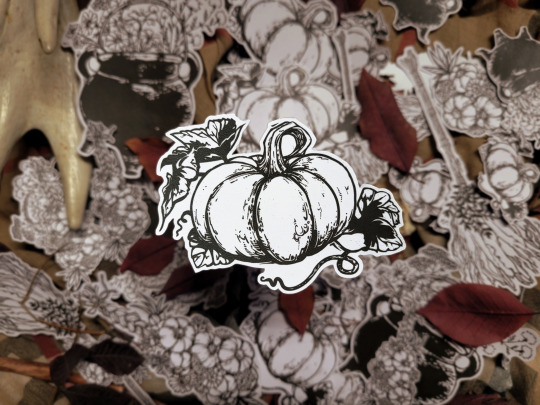


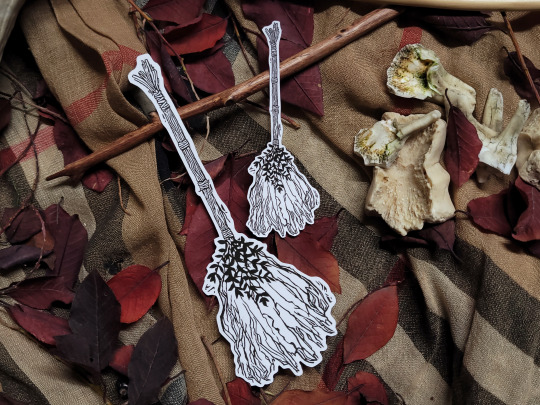
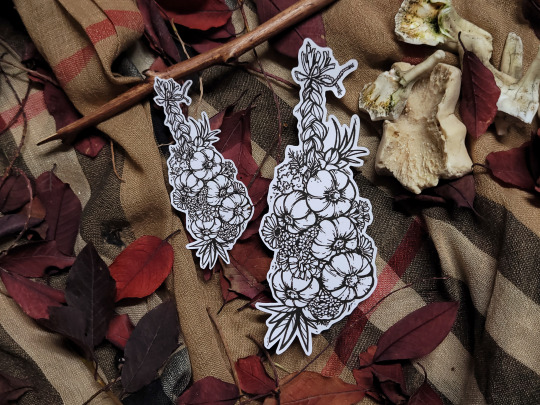
🍂Autumn Linocut Themed Stickers are up in the shop now! 🍂
Took me a bit longer than expected to finish them off but we got there before the equinox! Yay!
#autumn#fall#equinox#halloween#pumpkin#birch brooms#cauldron#dried flower cauldron#dried flowers#garlic#garlic braid#garlic braiding#sticker#linnocut stickers#pumpkin stickers#halloween stickers#witches broom#witches cauldron#fall vibes#fall sticker set#autumn sticker set#autumn aesthetics#fall aesthetics#autumn equinox#fall equiox#stickersets#handmade#ok forgive the tag spam#cat scratches
26 notes
·
View notes
Text
DEITY MASTERLIST (PART ONE)
NOTE: THIS IS A VERY LONG POST, AND EVERYTHING IS IN ALPHABETICAL ORDER.
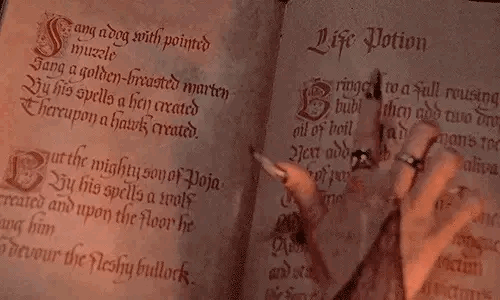
🌊 Ægir
God of: personification of the lcean, brewing, the sea.
Culture: Norse
Symbols: aegishjalmur and laguz rune
Plants: oak, polybody, and rose.
Animals: dolphins, whales and other sea creatures
Colours: blue, green, turquoise and other sea-like shades
Tarot: King of Cups
Offerings: singing sea shanties, seashells and pearls, cleaning up shores and the oceans, bread, sea glass, a bowl of salt water with food dropped into it, Anything related to the sea. Do not offer most beers as he does not like the modern chemical-filled ales, homebrew or local brew beer is better.
💕 Aengus Og
God of: youth, love, poetic inspiration, summer, and healing
Culture: Celtic
Symbols: Venus, copper, and golden harp
Plants: basil, cinnamon, rose, jasmine, sandalwood, strawberries, mistletoe, violet, birch, cherries, elder, and sycamore
Animals: swans, cats, doves, and sparrows
Colours: green, pink, and red
Tarot: The Lovers, Justice, and The World
Offerings: red roses, strawberries, cake, chocolate, honey, wine, cherries, music, and art.
🧚 Aine
Goddess of: summer, wealth, sovereignty, love, fertility, protection, wealth, agriculture, the sun and moon, and Queen of the faeries
Culture: Celtic
Symbols: silver and white Items, meadowsweet, the moon, and midsummer
Plants: angelica, blackberry, cowslip, elder, orchid, fennel, flax, garlic, mugwort, nettle, oak, hawthorn, mistletoe, alfalfa, ash, agrimony, birch, broom, holly, lavender, meadow-sweet, and gorse.
Animals: red mare, horse, rabbit, swan, cattle, and bees
Colours: red, gold, green, blue, and yan
Tarot: The Sun, Suit of Wands, and Queen of Pentacles
Offerings: milk, bread, home-grown produce, cream, fire and candles, sunflowers, yellow glowers, honey, summer fruits, oranges, and bee-related Items.
⛅ Amaterasu
Goddess of: the sun and the universe
Culture: Japanese
Symbols: mirror, jewel, sword, and bow and arrow
Plants: chrysanthemum, cryptomeria, carnation, chamomile, juniper, marigold, rosemary, and sunflower
Animals: dragon-fox, horse, rooster, and wolf
Colours: yellow, gold, red, and orange
Tarot: The Sun and The World
Offerings: rice crackers, cooked rice, origami figures, rice candy, brightly-coloured Japanese food, and silk and other fabrics.
💃 Ame-no-uzume
Goddess of: dawn, mirth, meditation, revelry, dance, fertility, and the arts
Culture: Japanese
Symbols: antique Items and fans
Plants: moss and sakaki
Animals: fox
Colours: pink, red, white, and yellow
Tarot: Three of Cups and Suit of Cups
Offerings: dancing, bells, silk ribbons, rice cakes, and dake.
⚰️ Anubis
God of: the dead, mummification, embalming, the afterlife, and tombs
Culture: Egyptian
Symbols: crook and flail, and mummy gauze
Plants: star anise, benzoin, cloves, cardamom, frankincense, myrrh, rosemary, cypress, and cedarwood
Animals: jackal
Colours: black, green, red, and gold
Tarot: Death
Offerings: cool water, strong liquor like rum, spicy foods, dark and bitter chocolate, strong incense, cypress oil, locks and keys, honour the dead and your ancestors, leave flowers on graves, support orphans and the homeless, and act as a guide for someone.
💘 Aphrodite
Goddess of: love, beauty, and fertility
Culture: Greek and Roman
Symbols: rose, pearl, mirror, girdle, anemone, lettuce, narcissus seashells, scallop shells, Venus, golden apples, the number 5, and mirrors
Plants: apple, linden tree, myrtle, pomegranate, myrrh, poppies, lettuce, rose, quince, ash, poplar, anemone, and artichokes
Animals: swans, dolphins, doves, sparrows, bees, and goats
Colours: red, pink, violet, silver, aqua, sea foam, and light blue
Tarot: The Empress, The Lovers, The Star, and The Suit of Cups
Offerings: roses, chocolate, apples, jewelry, beauty products, seashells, olive oil, honey, wine, cinnamon, art and music, mirrors, and rose quartz.
☀️ Apollo
God of: the Sun, prophecy, oracles, light, music, the arts, song, poetry, healing, medicine, plague, disease, protection of the youth, knowledge, and herds
Culture: Greek
Symbols: lyre, laurel wreath, silver bow and arrows, tripod, the Sun, and Sunday
Plants: laurel, larkspur, cypress, apple trees, palm trees, and hyacinthus
Animals: swan, raven, tortoise, serpent, wolf, dolphin, and mouse
Colours: gold, yellow, orange, silver, blue, and white
Tarot: The Sun, The Chariot, Strength, and Temperance
Offerings: red wine, olive oil, sun water, citrus fruits, honey, golden objects, feathers, lamb or goat meat, cheese, bread, sunflowers, laurel wreaths, and aloe vera.
🐕 Arawn
God of: Ruler of Annwn the Celtic Otherworld, leader of the wild hunt, death, the Underworld, and justice
Culture: Celtic
Symbols: the Hounds of Arawn, cauldron, and samhain
Plants: reeds, cedar, cypress, ivy, honeysuckle, and sage
Animals: hounds and pigs
Colours: red, black, white, brown, green, gold, and grey
Tarot: Suit of Pentacles and King of Pentacles
Offerings: game birds such as duck or turkey, bread, honey, milk, mead, and ale.
⚔️ Ares
God of: war, courage, and battle
Culture: Greek
Symbols: sword, shield, spear, helmet, and iron
Plants: thorns, peppers, chilli, and garlic
Animals: serpents, vultures, woodpeckers, horses, and dogs
Colours: red, purple, and black
Tarot: The Emperor, The Chariot, The Tower, Suit of Wands, and King of Wands
Offerings: dark wine, whiskey, spicy foods, coffee, water, olive oil, red meats, frankincense, weapons, and learn self defence.
🌌 Arianrhod
Goddess of: fertility, fate, reincarnation, beauty, and difficulties
Culture: Celtic
Symbols: silver wheel, full moon, weaving tools, the zodiac, and Corona Borealis
Plants: ivy, lavender, rosemary, cedar, and pine
Animals: spiders, owls, and wolves
Colours: silver, white, green, blue, and purple
Tarot: The Star, The Moon, and Wheel of Fortune
Offerings: silver coins, white candles, wheat, fruits, home-cooked meals, salads, wine, water, hot teas, smoothies, and study the constellations and the zodiac.
🏹 Artemis
Goddess of: the hunt, wild animals, wilderness, childbirth, girls, chastity, archery, disease, and plague
Culture: Greek
Symbols: bow and arrow, quiver, hunting spears, animal pelts, lyre, torches, and the moon
Plants: cypress, walnut, amaranth, almond, daisy, willow, wormwood, fir, pine, thistle, honeysuckle, bay laurel, artemisia, fig, and oak
Animals: stag, deer, dog, bear, boar, quail, guineafowls, bee, and all wild animals
Colours: white, silver, gold, yellow, green, and blue
Tarot: The High Priestess, The Hanged Man, Temperance, The Moon, Queen of Pentacles, Knight of Cups, and Page of Wands
Offerings: red wine, olive oil, honey, water, almonds, walnuts, honeycakes, fruit, artemisia plants, arrows, dance, cypress, pine cones and branches, cider, game meat, protect nature and wildlife, always help animals and women in need, go hiking, research native plants and animals, and follow the moon phases and work with them.
❤️🔥 Astarte
Goddess of: love, sexuality, war, hunting, and power
Culture: Canaanite
Symbols: chariot and Venus
Plants: lilies and coriander
Animals: lion, horse, dove, and sphinx
Colours: red and white
Tarot: The Empress and The Chariot
Offerings: lilies, roses, sweet cakes, honey, henna tattoos, and clothing stained with menstrual blood.
⚖️ Athena
Goddess of: wisdom, handicraft, and strategic warfare
Culture: Greek
Symbols: aegis, Gorgon’s Head, spear, and helmet
Plants: olive tree, ivy, cypress, and cornel tree
Animals: owl, snake, rooster, crow, and spider
Colours: blue, grey, white, yellow, and silver
Tarot: Justice, The High Priestess, and The Emperor
Offerings: olive oil, honey, wine, bread, olives, pears, olive tree leaves or branches, your handicrafts, owl feathers, snake skins, and weapons.
🐐 Baphomet
God/Goddess of: sexuality, demonic forces, wisdom, nature, balance, darkness, and pride
Culture: Demonic
Symbols: pentagram, head of a goat, human body with an animal head, pentacle, sword, key, male and female, and the words "as above so below"
Plants: rosemary, lilacs, irises, lavender, aconitum napellus, black walnut, and cacao
Animals: black goats, snakes, wolves, ravens, dogs, oxen, and black cats
Colours: black, white, yellow, red, green, purple, gold, and dark blue
Tarot: The Chariot, The Hermit, The Empress, and The Devil
Offerings: our time, meditation, communication, carving their symbol or name into a candle, any kind of art of them, being respectful, learning about them, candles, liquor, ropes, incense: dragons blood, black musk, frankincense, etc, animal skulls, bones, horns, etc, and dark or red flowers.
🛖 Baba Yaga
Goddess of: death and rebirth, fertility, and nature
Culture: Slavic
Symbols: knife, oven, mortar and pestle, and the Sun
Plants: poppy, black sunflower, medicinal herbs, and rye
Animals: horse, hedgehog, snake, dragon, and cat
Colours: red, black, and white
Tarot: The Devil
Offerings: lavish home-cooked meals with russian delicacies and a beautifully-set table, caravan tea, and vodka.
💡 Baldr
God of: light, joy, purity, and summer
Culture: Norse
Symbols: the Sun and Sunday
Plants: mistletoe, chamomile, daisies, white flowers, ash, marigold, and St John’s wort
Animals: songbirds
Colours: yellow, gold, and white
Tarot: The Sun, The Fool, Death, and The World
Offerings: kindness to others, chamomile tea, apple juice, mead, and lit candles.
🌺 Bast
Goddess of: home, domesticity, women’s secrets, cats, fertility, childbirth, marriage, music, magic, sex, prosperity, joy, dance, healing, and pleasure
Culture: Egyptian
Symbols: basket, Ankh, the Sun and Moon, and perfume jar
Plants: catnip, vervain, cinnamon, and cannabis
Animals: cat and lion
Colours: green and gold
Tarot: The Chariot, Strength, and The Sun
Offerings: perfume, salves and body scrubs, milk, meat, honey, gold items, chocolate, pastries, onions and garlic, bread, beer, tea, and taking care of cats.
🐉 Benzaiten / Benten
Goddess of: water, literature, music, wealth, femininity, fertility, dance, and love
Culture: Japanese
Symbols: Biwa, dragon, pearl, conch shell, iron, and gold
Plants: lotus, water lilies, and yellow flowers
Animals: snakes, dragons, and white snakes are her messengers
Colours: blue, silver, white, and yellow
Tarot: The Empress and The Suit of Cups
Offerings: money, water, rice, sake, gemstones, music and other creative arts, raw eggs, yellow flowers, blessed water, bath rituals, and seashells.
🧶 Berchta
Goddess of: psychopomp, spinning and weaving, abundance, and protector of women and children
Culture: Germanic
Symbols: keys, distaff, Yule, and falx
Plants: mayflowers, holly, evergreens, birch, and wild berries
Animals: goose, swan, goat, cricket, owl, and fox
Colours: blue, white, red, and gold
Tarot: Death
Offerings: herring, dumplings, alcoholic beverages like schnapps.
📓 Bragi
God of: poetry and eloquence
Culture: Norse
Symbols: harp and book
Plants: beech, fern, and lily of the valley
Animals: chickadee
Colours: orange and gold
Tarot: The Magician and The Hermit
Offerings: mead, poetry, and beautiful writing.
🍀 Brigid
Goddess of: spring, fertility, family, the hearth, childbirth, fire, blacksmiths,
scholars, physicians, prophets, healing, poetry, occult knowledge, and justice
Culture: Celtic
Symbols: Brigid’s Cross, candles, triquetra, faeries, four leaf clovers, cauldron, chalice, corn dolly, anvil, hammer, poetry, forges, hearths, and wells and rock formations
Plants: cinnamon, chamomile, blackberry, hawthorn, basil, mugwort, apple, heather, dandelion, snowdrop, willow, oak, shamrock, crocus, trillium, corn, lavender, and sage
Animals: snakes, sheep, cows, bees, owls, and hibernating animals
Colours: green, red, white, gold, and blue
Tarot: The Hierophant, The Lovers, Strength, The Hermit, The Sun, and Suit of Wands
Offerings: blackberries, milk, bread, herbal teas, heather, Brigid’s Cross, beer, apple cider, honey, baked goods, corn dollies, sheep’s wool products, jewelry or metal items, eggs, and cakes left on the windowsill at Imbolc.
❄️ Cailleach
Goddess of: winter, wind, the cold, creation, and transformation
Culture: Celtic
Symbols: hammers, hills, mountains, skulls, snow, wands, and waning moons
Plants: clove, lavender, apple, hazelnut, turnip, mugwort, pansy, patchouli, poppy, rose, rue, tansy, St John's wort, Witch hazel, woodruff, yarrow, elder trees, elm, pine, yew, gorse, holly, and snapdragon
Animals: bat, cattle, deer, fish, goat, mouse, owl, raven, reindeer, sheep, spider, pig, and wolf
Colours: black, blue, brown, grey, silver, white, and yellow
Tarot: Death, The Moon, and The Hermit
Offerings: pebbles, hag stones, shells, feathers, and boiled sweets.
🌲 Cernunnos
God of: forests, wild animals, finances, the Underworld, death, hunting, balance, grounding and healing, transitioning into the afterlife, and fertility
Culture: Celtic
Symbols: horns, a torc, gold coins, and serpents
Plants: ash, bayberry, chamomile, cedar, cinnamon, heliotrope, holly, ivy, lavender, juniper, myrrh, nettle, oak, patchouli, pine, sandalwood, sunflower, vine, and yarrow
Animals: stags, elk, goats, deer, bulls, horses, ram horned snakes, snakes, boars, owls, hawks, and ravens
Colours: yellow, gold, forest greens, silver, and black
Tarot: The Lovers, The World, and King of Pentacles
Offerings: dancing, venison, cooked meats (ethically sourced), roses, sunflowers, lavender, wildflowers, juniper bark and berries, oak wood carvings, green or gold candles, cinnamon, cloves, pine scents, pelts (ethically sourced), feathers, bones, forest moss, antlers, horns, pine cones, gold coins, daggers, poetry art, and Celtic music.
🌑 Cerridwen
Goddess of: the Moon, luck, poetry, change, rebirth, transformation, the Underworld, death, fertility, inspiration, magic, and knowledge
Culture: Welsh
Symbols: cauldron, dark Moon, lunar cycles, and caves
Plants: corn, grain, vervain, acorns, apple, oak, and hazel
Animals: white pig, greyhound, crow, hen, hare, otter, and hawk
Colours: silver, purple, black, grey, and green
Tarot: The Moon, Death, The Magician, and Suit of Cups
Offerings: pork, bread, milk, water, wheat, white and green candles, barley, rice, peanuts, poppy or sunflower seeds, vervain, and grain-based products.
✨ Circe
Goddess of: sorcery
Culture: Greek
Symbols: cup, loon, wand, and masks
Plants: hallucinogenic herbs and fungi, wheat, moly, and magical herbs
Animals: pig, lion, wolf, hawk, and beasts in general
Colours: gold, purple, silver, and red
Tarot: Queen of Cups and The Magician
Offerings: barley, wine, honey, meat, bread, weaving, and divination.
Danu
Goddess of: Earth-mother, fertility, wisdom, wind, and water
Culture: Celtic
Symbols: crowns, keys, wells, cauldron full of water, rivers, Celtic Tree of Life, and mother aspect of the triple Goddess
Plants: oak and water lily
Animals: fish, horses, seagulls, salmon, and snakes
Colours: blue, white, silver, and green
Tarot: The Empress and Strength
Offerings: wine, mead, ale, freshwater, and watering plants.
🔥 Dazbog
God of: the Sun, fortune, wealth, light, fertility, fire, destiny, and justice
Culture: Slavic
Symbols: kolovrat
Plants: sunflowers, marigold, calendula, chamomile, angelica, and St John’s wort
Animals: wolf, horse, goose, duck, and swan
Colours: white, gold, and red
Tarot: The Sun, Suit of Wands, and King of Wands
Offerings: bread, salt, eggs, pancakes, and bonfire.
🌾 Demeter
Goddess of: agriculture, harvest, fertility, and motherhood
Culture: Greek
Symbols: wheat, torches, and cornucopia
Plants: wheat, barley, mint, and poppy
Animals: snake, pig, gecko, dove, crane, screech owl, and grasshopper
Colours: gold, green, and brown
Tarot: The High Priestess and The World
Offerings: olive oil, water, fruit, honey, milk, grains, bread, freshly harvested goods, and water.
🍷 Dionysus
God of: wine, drunkenness, parties, wilderness, vegetation, fertility, ritual madness, religious ecstasy, theatre, and LGBT+ Community
Culture: Greek
Symbols: thyrsos, ivy crown, and Grapevine
Plants: grape, ivy, cinnamon, silver fir, bindweed, and figs
Animals leopard, goat, donkey, lion, snake, bull, and panther
Colours: red, purple, green, burgundy, and gold
Tarot: The Hanged Man, The Hierophant, The Devil, The Fool, and The Lovers
Offerings: wine, olive oil, fruit, water, honey, meats, wheat, barley, pinecone, ivy leaves, goblets, masks, and alcoholic beverages.
⚕️ Eir
Goddess of: healing and medicine
Culture: Norse
Symbols: copper, mortar and pestle, and sauna
Plants: medicinal herbs
Colours: red
Tarot: The Hanged Man
Offerings: healing spells, learning first aid, medicinal herbs, and first aid items.
🎣 Enki
God of: freshwater, wisdom, knowledge, magic, crafts, healing, fertility, creation, and the arts
Culture: Mesopotamian
Symbols: goatfish
Plants: thyme, chamomile, reeds, and cattails
Animals: goat, fish, chimera, robin, and cow
Colours: gold, blue, white, and silver
Tarot: The Hanged Man, The Hierophant, The Devil, The Fool, and The Lovers
Offerings: beer, eggs, fruit, vegetarian foods, myrrh, thyme, chamomile, wildflowers, fish, water, wine, silver or copper jewelry, and feathers.
💐 Eostre
Goddess of: spring and dawn
Culture: Germanic
Symbols: painted eggs
Plants: crocus, daffodil, primrose, and violet
Animals: rabbit, serpent, and dragon
Colours: green, yellow, and purple
Tarot: Queen of Pentacles
Offerings: decorating eggs, flowers, hot cross buns, pastries, and mead.
💀 Ereshkigal
Goddess of: death and the Underworld
Culture: Mesopotamian
Symbols: wood, rivers, boats, and lapis lazuli
Plants: pomegranate, grains, reeds, hemp, cedar, cypress, lotus, and monkshood
Animals: lion, owl, serpent, scorpion, owl, and sheep
Colours: silver, gold, red, and purple
Tarot: Death and The High Priestess
Offerings: fasting, bread, water, pomegranate juice, blackberries, blueberries, lamb or goat meat, lobster and mussels, nutmeg, garlic, poppy seeds, animal bones, gold or silver jewelry, black crystals, and Ornate scepters with wood and animal bones.
🧵 Frau Holda
Goddess of: fibre Arts, winter, protector of children and women, leader of the wild hunt, and Witchcraft
Culture: Germanic
Symbols: the Winter Solstice, pools, and Wells
Plants: holly, elder, juniper, mugwort, flax, and sorcerer’s violet
Animals: wolf and rabbit
Colours: blue and white
Tarot: The Empress, The High Priestess, and Death
Offerings: juniper berries, wine, cider, mead, cakes, music, dancing, and knot magick.
🐈 Freya / Freyja
Goddess of: love, beauty, fertility, sex, war, battle, gold, and sorcery
Culture: Norse
Symbols: her chariot pulled by cats, Brisíngamen necklace, the boar Hildisvíni, and cloak of Feathers
Plants: daisy, linden, snowdrops, lily of the valley, cowslip, columbine, pimpernel, and strawberries
Animals: horse, cat, falcon, hawk, rabbit, ladybug, oxen, swallow, and boar
Colours: gold, yellow, white, green, red, pink, and light blue
Tarot: The High Priestess, The Empress, The Lovers, The Chariot, Death, and Suit of Swords
Offerings: ale, apples, barley, honey, mead, pork, lavish jewelry and perfume, feeding stray cats, chocolate, amber, roses, cinnamon, and sweet liquors.
🐗 Freyr
God of: Peace, Fertility, Rain, Sunshine, Prosperity and Agriculture
Culture: Norse
Symbols: boar, the Sun, magical swords, phallus, and Friday
Plants: ash, lavender, catnip, nuts and cones, yew, holly, and ivy
Animals: boar, bee, and stag
Colours: gold, green, red, blue, pink, orange, and yellow
Tarot: The Lovers, The Sun, Suit of Pentacles, and King of Pentacles
Offerings: honey, grains and breads, gold, and antlers.
👰 Frigg
Goddess of: motherhood, marriage, prophecy, and fertility
Culture: Norse
Symbols: spinning wheel, silver, clouds, and mist
Plants: mistletoe, birch, fir, hawthorn, and Frigg’s grass
Animals: falcon, sheep, raven, and hawk
Colours: blue, silver, and white
Tarot: The Empress and The Lovers
Offerings: milk, mead, pastries, light fruity wine, hand-spun fibres, feathers, and soups and stews.
🪦 Hades
God of: the Underworld and wealth
Culture: Greek
Symbols: keys, chariot, helmet, Cerberus, serpent, dogs, and pomegranate
Plants: mint, white poplar, cypress, asphodel, narcissus, and pomegranate
Animals: snake, dog, sheep, cattle, screech owl, horse, black ram, bull, vulture, black cat, crow, and raven
Colours: dark blue, black, purple, dark green, bronze, gold, silver, and grey
Tarot: The Hermit, Death, Judgment, and Suit of Swords
Offerings: dark wine, whiskey, coffee, black tea, peppermint tea, dark chocolate, meat, sharp cheeses, bread, pomegranates, apples, bones, coins, keys, and crowns.
🪘 Hathor
Goddess of: the sky, women, fertility, love, the Sun, music, dance, joy, motherhood, fate, foreign lands and goods, and the afterlife
Culture: Egyptian
Symbols: sun disk, mirrors, drums and sistrums, and the number 4
Plants: sycamore, myrrh tree, dates, papyrus, and henna
Animals: cow, lioness, cobra, goose, gazelle, and cat
Colours: red
Tarot: The Empress, The Lovers, Wheel of Fortune, and Suit of Cups
Offerings: figs, dates, bread, cheese, butter, wine, beer, fresh water, perfumes, and makeup
👻 Hecate / Hekate
Goddess of: Witchcraft, necromancy, ghosts, the night, boundaries, and crossroads
Culture: Greek
Symbols: paired torches, keys, crossroads, dark/triple moon, wheel, daggers, rope, dogs, serpents, knives, and Strophalos
Plants: asphodel, garlic, yew, cypress, and poisonous plants
Animals: dog, mare, serpent, cat, bats, and polecat
Colours: black, grey, silver, gold, violet, green, red, and white
Tarot: The High Priestess, The Hermit, The Moon, and Queen of Pentacles
Offerings: wine, olive oil, water, fruit, honey, milk, eggs, garlic, almonds, various herbs, bones, wands, keys, a cauldron, crow feathers, pomegranates, dark chocolate, and blood.
📯 Heimdallr
God of: watchmen of the Gods
Culture: Norse
Symbols: horn and rainbow
Plants: birch, oak, rose, verbena, and avens
Animals: rooster, horse, and ram
Colours: white and rainbow
Tarot: The Hermit
Offerings: mead, fine beer, freshwater, lamb meat, pork, and coffee.
💀 Hel
Goddess of: death and the afterlife
Culture: Norse
Symbols: skulls and bones
Plants: beech, alder, elm, ivy, juniper, willow, and yew
Animals: wolf
Colours: black and white
Tarot: Death, The Tower, and Suit of Swords
Offerings: tea, wine, apples, meat, bread, soup, dried flowers, and blood.
🌋 Hephaestus
God of: metal smithing, fire, volcanoes, craftsmanship, and technology
Culture: Greek
Symbols: hammer, tongs, and anvil
Plants: fennel
Animals: donkey, crane, and dog
Colours: gold, yellow, orange, silver, grey, and red
Tarot: Judgment and Suit of Wands
Offerings: wine, olive oil, water, fruit, honey, bread, meat, spicy things, hot beverages, and handmade metal items.
👑 Hera
Goddess of: marriage, fertility, childbirth, Kings and Empires, women, family, the sky, and the stars
Culture: Greek
Symbols: lotus-staff, throne, and diadem
Plants: pomegranate, lotus, willow, and apple
Animals: hawk, peacock, lion, cow, cuckoo, and crane
Colours: gold, silver, white, purple, blue, and green
Tarot: The Empress, The World, Suit of Cups, and Queen of Cups
Offerings: wine, olive oil, water, fruit, honey, milk, grains and bread, chocolate, pomegranates, apples, white flowers, crowns, animal shells, perfume, and silver or gold jewelry.
💸 Hermes
God of: messenger of the God, heraldry, omens, animal husbandry, poetry and fables, trade, travel, boundaries, thieves, wit, language, education, and psychopomp
Culture: Greek
Symbols: caduceus, Talaria, petasos, and lyre
Plants: crocus, Greek strawberry, palm tree, almond tree, and strawberries
Animals: tortoise, ram, hawk, rooster, serpent, and hare
Colours: gold, yellow, orange, silver, grey, green, and red
Tarot: Judgment, The Magician, The Fool. The Hierophant, The Hermit, The Star, Suit of Swords
Offerings: wine, olive oil, water, strawberries, foreign foods and items, honey, water, fruit, chocolate, wheat, lemons, almonds, cinnamon, coins, dice, beer, meat, chamomile tea, pineapple, bread, and milk mixed with honey.
🏠 Hestia
Goddess of: the home, the hearth, family, domesticity, and The Civic or The Sacrificial Flame
Culture: Greek
Symbols: hearth, kettle, and head veils
Plants: poppy, goldenrod, hollyhock, and yarrow
Animals: pig, cow, donkey, and crane
Colours: gold, white, orange, red, and lavender
Tarot: Strength, The Hermit, and Queen of Wands
Offerings: wine, olive oil, water, fruit, honey, milk, pork, bread, cooking herbs, tea, and candles.
🦅 Horus
God of: kingship, the sky, war, protection, and healing
Culture: Egyptian
Symbols: crown, Eye of Horus, Ankh, the Sun, and the Moon
Plants: acacia, lettuce, iris, lotus, and olive
Animals: falcon, hawk, bull, peacock, and lion
Colours: green
Tarot: The Emperor, The Hierophant, The Chariot, The Sun, Judgment, and King of Swords
Offerings: raw meat left out for hawks and falcons, bread, weaponry, water, milk, ale, wine, coffee, fruits and vegetables, figs, dates, and chocolate with nuts.
😴 Hypnos
God of: sleep, dreams, and illusions
Culture: Greek
Symbols: inverted torch
Plants: poppy and cottonwood tree
Animals: nighthawk and songbirds
Colours: black, silver, white, blue, red, and purple
Tarot: The Hierophant
Offerings: wine, olive oil, water, honey, milk, fruit, poppy seeds (and foods including them), herbal teas, sleep inducing and calming herbs, feathers, sleeping mask, and poppy flowers.
🍎 Idunn
Goddess of: spring, rejuvenation, immortality, youth, and beauty
Culture: Norse
Symbols: golden apples and ashwood box
Plants: apple blossom, birch, fir, hawthorn, mugwort, rose, and willow
Animals: songbirds
Colours: green, silver, red, and yellow
Tarot: Page of Wands, Queen of Cups, and Queen of Pentacles
Offerings: gardening, apples, homegrown fruits and vegetables (without pesticides), apple pie, and cider
💖 Inanna
Goddess of: romantic love, harmony, sex, beauty, passion, desire, fertility, victory, war, justice, and political power
Culture: Mesopotamian
Symbols: eight-pointed star, hook-shaped Knot of Reeds and Venus
Plants: lilies, narcissus, reeds, myrtle, and all sprouts
Animals: lion and dove
Colours: green, black, red, silver, and white
Tarot: The Lovers, The Hierophant, Justice, The Hanged Man and The Star
Offerings: Wine, Champagne, Lemonade, Honey, Chocolate and Pastries, Cherries, Pomegranates, Strawberries, Elegant Jewelry, Peaches, Swords and Daggers, Artwork and Poetry
🦊 Inari
God of: rice, foxes, fertility, tea, sake, crafts, agriculture, industry, and prosperity
Culture: Japanese
Symbols: keys, wish-granting jewel, and rice
Plants: cryptomeria, cedar, pine, wheat, and rice
Animals: fox
Colours: red and white
Tarot: Suit of Pentacles
Offerings: inarizushi, rice, rice cakes, rice served with red beans, sake, incense, acts on behalf of foxes, handmade crafts, and tea.
☄️ Isis
Goddess of: magic, life, compassion, fertility, motherhood, childbirth, rebirth, devotion, royalty, knowledge, protection, abundance, healing, and the elements.
Culture: Egyptian.
Symbols: moon disk, cow horns, wings, solar disk, Ankh, and gold.
Plants: sycamore, cedar, corn, flax, wheat, barley, grapes, lotus, vervain, myrrh tree, and papyrus.
Animals: hawk, crocodile, scorpion, crab, cobra, goose, swallow, dove, vulture, and snakes in general.
Colours: yellow, silver, gold, black, red, cobalt blue, and green.
Tarot: The High Priestess, The Empress, The Lovers, Strength, The Hermit, Wheel of Fortune, Temperance, The Star, The Moon, The World, and Suit of Cups.
Offerings: milk, flowers, honey, wine, lemonade, tropical fruits (juice or whole), herbal tea, seafood, herbs (anise and nutmeg), roses, Egyptian jewelry, incense, and white candles.
🌿 Jarilo / Yarilo
God of: vegetation, fertility, spring, rebirth, sexuality, peace, and war
Culture: Slavic
Symbols: vegetation
Plants: wheat, ferns, and spring flowers
Animals: horse and white wolf
Colours: white, yellow, gold, and green
Tarot: The Sun, Strength, and Suit of Pentacles
Offerings: bread, wheat, spring flowers, and edible seeds
🌍 Jörð
Goddess of: personification of the Earth
Culture: Norse
Symbols: mountains, grandmothers, and girdle
Plants: local native plants and healing herbs
Animals: bee
Colours: green
Tarot: The World and Queen of Pentacles
Offerings: picking up litter and trash and taking care of the Earth and nature.
#fyp#fypシ#fypシ゚viral#fypage#fyppage#tumblr fyp#satanism#satanist#deity#deity work#deity worship#occult#information#long post#gods#goddesses
12 notes
·
View notes
Photo

Legends and myths about trees
Celtic beliefs in trees (6)
Ogham alphabet and tree calendar
The Ogham alphabet is the most ancient Irish writing script. There, every letter of the alphabet is associated with the name of a tree, and for this reason, ogam is sometimes known as the Celtic tree alphabet.
The ogham script was a secret means of communication for the druids and also a key to the spirit world.
There are roughly 400 surviving orthodox inscriptions on stone monuments throughout Ireland and western Britain, the bulk of which are in southern Munster. The largest number outside Ireland are in Pembrokeshire, Wales.
Details of the Celtic tree calendar are as follows:
B for Beth (Birch) - December 24th - January 20th
L for Luis (Rowan) - January 21st - February 17th
N for Nion (Ash) - February 18th - March 17th
O for Onn (Golden Gorse) - March 21st Spring Equinox
F for Fearn (Alder) - March 18th - April 14th
S for Saille (Willow) - April 15th - May 12th
H for Huath (Hawthorn) - May 13th - June 9th
D for Duir (Royal Oak) - June 10th - July 17th
U for Ura (Heather) - June 21st Summer Solstice
T for Tinne (Holly) - July 18th - August 5th
C for Coll (Hazel) - August 5th - September 1st
Q for Quert (Apple) - September 2nd - September 29th
E for Eadha (Aspen) - September 21st Autumn Equinox
G for Gort (Ivy) - September 30th - October 27th
Ng for Ngetl (Broom) - October 28th - November 24th
Ss for Straif (Blackthorn) - Samhain/Hallowe'en
R for Ruis (Elder) - November 25th - December 21st
I for Idho (Yew) - December 21st Winter Solstice
A for Ailm (Pine) - December 23rd Birth of the Divine child
Ph for Phagos (Beech) - all year around

木にまつわる伝説・神話
ケルト人の樹木の信仰 (6)
オガム文字と木の暦
オガム文字は、最古のアイルランドの表記文字 (アルファベット)。そこでは全てのアルファベットが木の名前と結びついており、このため、オガム文字はケルトの樹木のアルファベットと呼ばれることもある。
オガム文字はドルイドにとって密かな伝達の手段であり、また霊の世界に導く鍵でもあった。
アイルランドとイギリス西部の石碑には、約400の正統派の碑文が現存しているが、その大部分はマンスター南部にある。アイルランド以外で最も数が多いのは、ウェールズのペンブルックシャーである。
ケルトの木の暦の詳細は以下の通り:
B は Beth (シラカバ) - 12月24日~1月20日
LはLuis (ナナカマド) - 1月21日~2月17日
NはNion (トリネコ) - 2月18日~3月17日
OはOnn (ハリエニシダ) - 3月21日・春分の日
FはFearn (ハンノキ) - 3月18日~4月14日
SはSaille (ヤナギ) - 4月15日~5月12日
HはHuath (サンザシ) - 5月13日 - 6月9日
DはDuir (ロイヤル・オーク) - 6月10日~7月17日
UはUra (ヒース) - 6月21日・夏至
TはTinne (ヒイラギ) - 7月18日~8月4日
CはColl (Hazel) -8月5日~9月1日
QはQuert (リンゴ) - 9月2日~9月29日
EはEadha (ポプラ) - 9月21日・秋分の日
GはGort (キヅタ) - 9月30日~10月27日
NはNgetl (エニシダ) - 10月28日~11月24日
SはStraif (リンボク) -サムハイン/ハロウイーン
RはRuis (ニワトコ) - 11月25日~12月21日
IはIdho (イチイ) - 12月21日 冬至
AはAilm (マツ) - 12月23日 神の子の誕生
Ph は Phagos (ブナ) - 1年中
#celtic mythology#celts#trees#tree folklore#tree myth#forklore#ogham#ogham alphabet#tree calender#philosophy#nature#art
124 notes
·
View notes
Text
herbs for beltane: 🔥🌿

happy beltane everyone !! this gaelic festival celebrates the beginning of summer. as temperatures rise and days get longer, this is a great holiday for using fire magic and fire element herbs like the following:
birch: represents purity, renewal, and love. besom (birch) brooms were also used historically to 'sweep away' bad spirits from the household and garden
oak: associated with strength, wisdom, and truth. it promotes vitality and protection against sickness, whether physical or spiritual
fir: brings progress, growth, and emotional fortitude. helps us withstand the difficulties of life. great for reversal spells and breaking hexes
basil: encourages fidelity and love in our relationships, delivers friendship to us; associated with positivity, wealth, and community
ginger: promotes success, victory, and healthy accomplishment. good for purifying social spaces before attaining prosperity or achievement. prevents anger
cayenne pepper: excellent for removing obstacles and negative influences from our lives. an aggressive protection herb; most peppers work well for exorcizing spaces
carnation: brings catharsis, emotional stability and relief, healing, patience, and gratitude. helps create more peace within the household
book a reading !!
my linktree
#astro#astrology#astroblr#astro thoughts#astro community#zodiac#zodiac signs#horoscope#witchblr#witch tips#witchcraft#witchy thoughts#witchy things#witch community#witch blog#witch stuff#beltane#herb magick#herbal magick#herbal magic#herbal witch#herbal witchcraft#herbology#herbalism#trans astrologer#disabled astrologer
8 notes
·
View notes
Note
Gerry and Michael (Shelly or distortion) for the perfume ask thing :]
Gerry:
for Gerry I've already given him A City on Fire by Imaginary Authors, but I think he'd also enjoy Ink by Akro! the notes in Ink are vetiver, birch, jasmine, and--just as the name might suggest--ink. it's supposed to evoke a cold, dark ink. for someone so involved with tattoos and books, I think that that would be both nostalgic and ironic for Gerry.
Michael Shelley:
I imagine that Michael Shelley would want something soft. not jarring, not overpowering, not too sharp. something that would be pleasant if you caught a whiff of it on the street, and comforting in your day-to-day life. for him I'd pick Memoirs of a Trespasser by Imaginary Authors. the main notes are vanilla, wood (guaiac and oak barrels), and myrrh. it's a warm, ever-so-slightly boozy wood and vanilla scent that smells like well-worn autumn sweaters. (yes there is some bias here because Memoirs is one of my favorite scents and Michael is one of my favorite characters lol but I still think it fits!)
Michael Distortion:
ooooooh yes, okay! let's go with something weird. for Michael Distortion I'm gonna go with Soma by Alkemia. the concept of the fragrance is that it uses the scents of psychoactive plants! so it's got notes of cannabis, artemisia, spanish broom, opium poppy, morning glory, and snake root, and then a dash of absinthe on top. this scent sounds like it would be a bit unpleasant, but also intriguing. it's a sharp departure from what I would imagine the OG Michael to have worn, but I feel like that dissonance only heightens the experience of interacting with a creature that both is and isn't Michael.
#I have more michael distortion options don't worry#I'm trying to give something new each time a character is repeated!#tma#the magnus archives#gerard keay#gerry keay#michael shelley#michael distortion#the distortion#perfume#scent#magpod#bs.txt#ask murderandcoffee#laf-e-taffy
22 notes
·
View notes